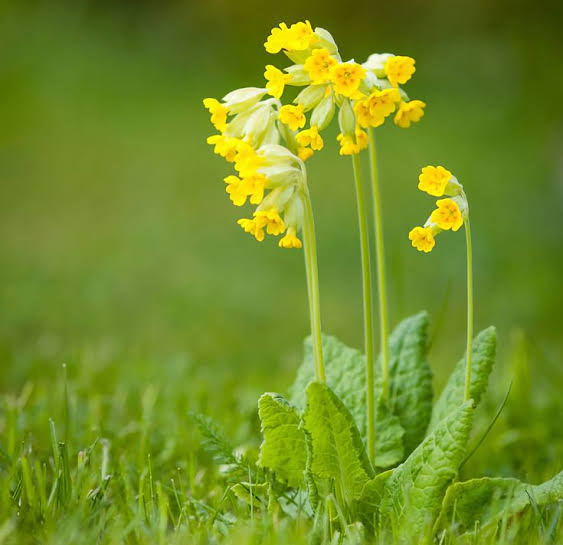- +033 2572 7171
- info@dhanvantary.com

4.5 Rating | 4500 Review

4.5 Rating | 4500 Review
Primula veris commonly known as Cowslip; is a very decorative flowering meadow native to the temperate Northern Hemisphere but in addition to its aesthetic features it also has medicinal properties and has been used as a medicinal herb for cough, cold, bronchitis, sleeplessness, neuropathic pains, headache, tremors and many more, according to EMA (European Medicines Agency).

Scientific Name
Primula veris
Kingdom
Plantae
Division
Magnoliophyta
Class
Magnoliopsida
Order
Primulales
Family
Primulaceae
Primula veris is native to Europe (abundantly grow bush in temperate regions) and Asia (occurs throughout the temperate areas of Europe as far east as the Russian border). As the name suggests, the wild habitat of the cowslip is a cow pasture and mostly found in free-drained, grasslands, herb-rich meadows in woodland or scrub rides and edges, and on calcareous rocks. Primula veris has also been introduced and naturalized in eastern North America. It blooms on alkaline loams or clays, on limestone, and sometimes in dunes.
Cowslip plant has mainly been utilized for making herbal tea and other dietary supplements. It is now mainly used as decoction or in liquid form for cardiac, nervous system and respiratory conditions. Due to its magical properties, this plant is also used in cosmetology and dermatology, whereas their flowers have a delicate scent that has long ago been exploited in perfumery. In wine making industries it is supposed to enrich wine with high flavonoid content or other biological compounds.
Primula veris contains various pharmacological activities due to its composition, for example, secretolytic, constrictive, expectorant, anti-inflammatory, anti-oxidative, diuretic, antimicrobial, antifungal, and sedative effects. The main components present in flowers and roots are triterpene saponins and phenolic compounds; including flavonoids, phenolic glycosides and phenolic acids. Expectorant and secretolytic activities present are due to saponins and phenolic compounds exhibit antimicrobial and antioxidant, properties present in Primula flowers.
Researchers showed that isorhamnetin aglycon present in the plant shows cytotoxic activity toward human hepatocellular carcinoma cells. Hyperoside compounds found in plants reveal antiviral activity also.
Primula veris species is considered an important index of human-mediated environmental changes (including climate change) and was referred to as a model plant by Charles Darwin. This plant is used as a garden ornament, but also used as a decorative component in many dishes such as in salads or soups.
Leaves, Flower, Root, Oil
Primula veris, a native medicinal plant of temperate regions of northern hemisphere has been widely used and accepted for different health benefits, as it has excellent secretolytic, constrictive, expectorant, anti-inflammatory, anti-oxidative, diuretic, antimicrobial, antifungal, and sedative effects, it can be seen as a potential herb for treating various health problems like respiratory and nerve problems , headache, tremors and many more. Further research is going on to explore its benefits to mankind.
